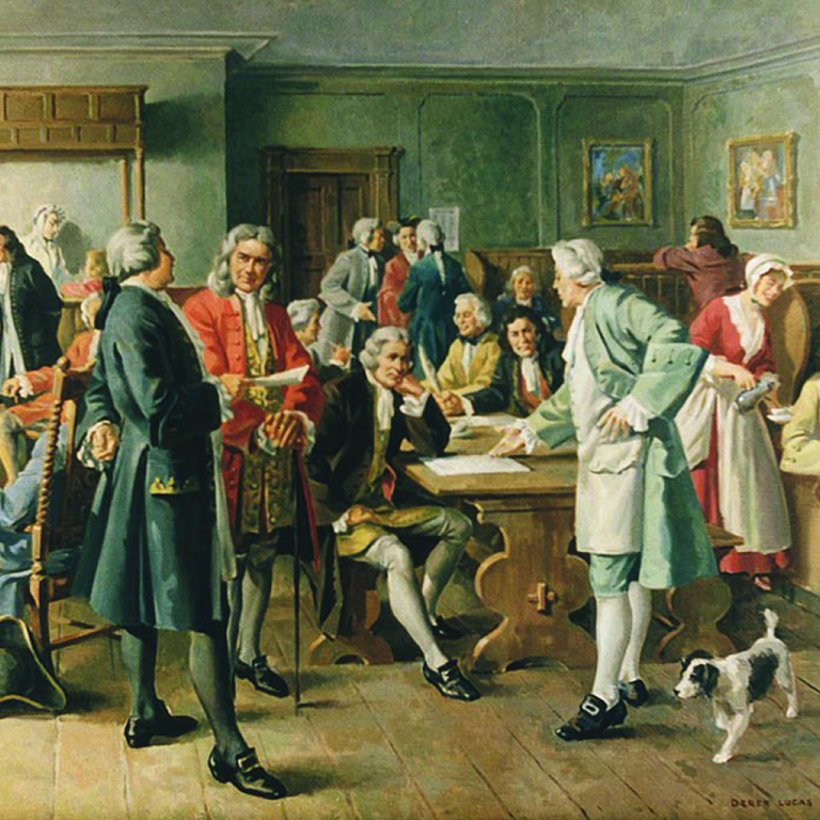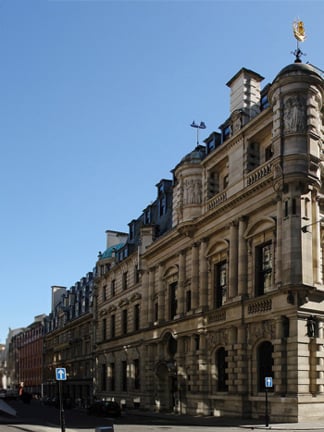See our 260 years of maritime history at a glance in a one page timeline.
Much has changed in the world since Lloyd’s Register (LR) was founded in 1760 and continues to do so. That’s why the history of LR, as you’ll see, is one of constant evolution to meet the changing demands of the shipping industry.
Lloyd’s Register originated at Edward Lloyd’s coffee house on Lombard Street in the City of London. Subscriptions for the Society’s annual Register Book, begun in 1764, funded surveyors to list, rate and class the condition of vessels.
Since our origins as a classification society, we have moved beyond compliance to become trusted advisers in safety, efficiency and sustainability for the maritime sector.
The Society resolved a dispute with a rival shipping register in 1834 by uniting to form Lloyd’s Register of British and Foreign Shipping. As steam superseded sail and timber gave way to iron and steel, ships of unprecedented size were built. LR met these challenges, drawing on practical experience to formulate guidelines for existing ships and those under construction.
International respect
The organisation rapidly earned international respect, but its General Committee rejected persistent overseas requests for the appointment of surveyors abroad, preferring to wait until the Society's network of outports in the UK had been properly established. Repeated requests from the Quebec Board of Trade finally resulted in Thomas Menzies being sent as the resident exclusive surveyor for Quebec and the St Lawrence River in 1852. With his assistant, Charles Coker, he did much to help local shipbuilders raise standards of construction. It was Menzies' idea in 1853 to use the Maltese Cross in the Register Book and on the classification certificates to denote a ship built under special survey.
Further appointments were made in continental Europe in the 1860s, including at Antwerp (1866) and Rotterdam (1868). Antwerp surveyor Louis Meyer became one of the first people given responsibility for an entire country when he was promoted to cover Belgium in 1869. A flurry of appointments followed, including in Shanghai, Calcutta, Hong Kong, Melbourne, Sydney and Hobart.
By the early 1880s almost half of the world’s shipping was classed by LR. In 1914, with an increasingly international outlook, it was appropriate that the organisation’s name was changed simply to Lloyd’s Register of Shipping. From 1916 the organisation started to establish many national and area committees to promote better understanding of local conditions.
Expanding skills
Inspection of materials and fabrication was an intrinsic part of the classification process. By the early 1800s surveyors were applying their skills onshore with everything from the testing of anchors and cables to the quality of iron and steel. As vessels became more sophisticated, the Society’s range of inspections expanded to non-marine areas, beginning with refrigerated cold stores for the Port of London Authority in 1911.
With its base in one of the world's leading manufacturing nations, the expertise and reputation of LR became attractive to many foreign governments and overseas organisations eager to have assurance on the quality of goods being produced in and shipped from the UK. The First World War saw the Society provide quality assurance for such products as shell steel for the French and copper pipes and other items for shipping in the USA. By 1934 surveyors were inspecting 10 million cubic feet of cold storage, not just in the UK but in places such as Antwerp and Basel, the Congo and Singapore.
LR retained its place as the leading classification society throughout the inter-war years, thanks in part to its significant overseas operations. Long-standing clients with interests beyond shipping began to employ LR in new fields, most notably the oil industry. All this activity expanded considerably after 1945, eventually leading to the formation of a separate division for non-marine work, providing a new focus for yet more growth.
Technological innovation
The Second World War accelerated the pace of change in shipping and industry and LR helped validate many innovations. Post-war reconstruction allowed the organisation to gradually revive its activities overseas. The mid-1950s saw a boom in shipping and new challenges with the balance of shipbuilding influence shifting towards Asia. Japan led the way in large-scale, assembly-style construction, with South Korea and China to follow.
LR saw remarkable growth of its non-marine operations. It provided consultancy and inspection services to atomic energy plants, including the UK’s Calder Hall, which in 1956 became the world’s first nuclear power station to generate electricity on an industrial scale.
In the 1960s, LR facilitated change as the shipping boom continued. Ships became ever larger and containerisation revolutionised the global flow of goods. The oil crisis of the early 1970s led to a deep depression in shipping, but LR rode the storm through its involvement with the expanding energy industry and offshore business, led by the pioneering development for extraction of oil and gas under the North Sea.
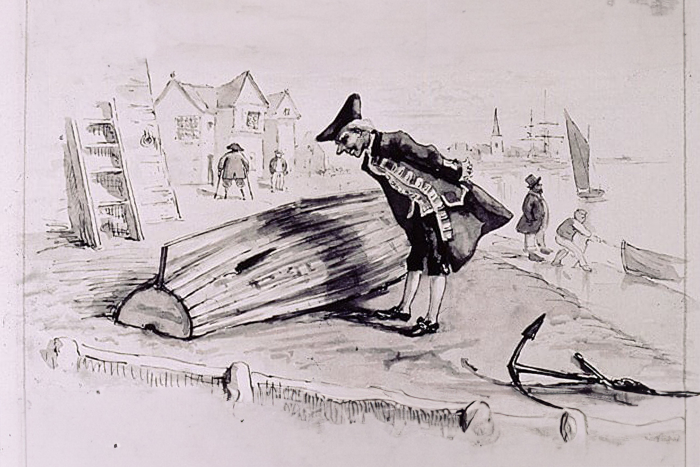
Since we sent our first surveyor to Shanghai in 1869, we have supported China’s huge transformation into today's global powerhouse.
Our shared story is one of people, partnership and innovation, and we look forward to supporting China’s next chapter as Lloyd’s Register evolves into a trusted maritime adviser to drive performance across the ocean economy.
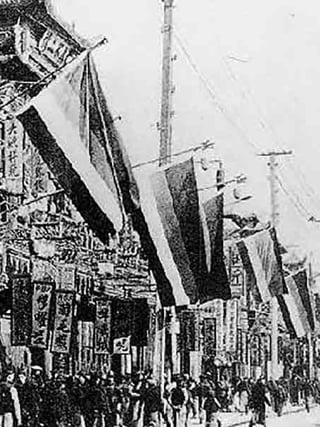
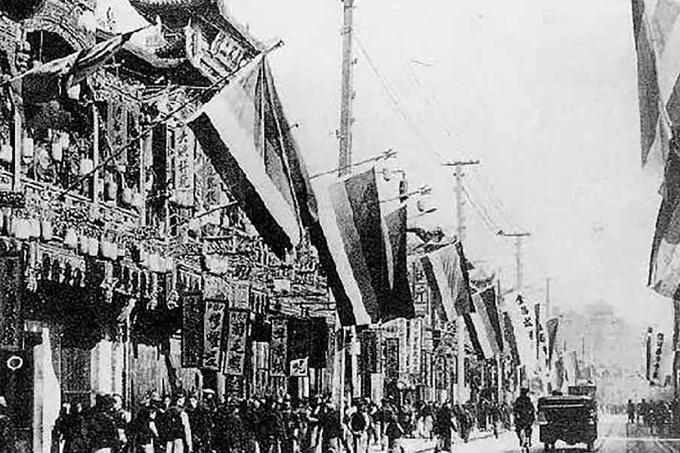
Diversified approach
There followed another difficult period as the maritime sector scarcely grew in terms of tonnage until 1990. At the same time the offshore industry suffered from a collapse in oil prices. Nevertheless, LR strengthened its position in Asia, diversified its offshore operations around the world and consolidated its position as the leading classification society for passenger ships and liquefied natural gas (LNG) carriers. One of the most striking developments was the success of the Business Assurance & Inspection Services division (LRQA), a management systems business established in 1985.
A consultancy-based rail business was first considered in the early 1990s and Lloyd's Register Rail was formed in 1996. Real growth began only a decade later as governments around the world invested massive sums in major rail projects from the Netherlands to Dubai and Taiwan. In 2015, LR sold its rail business to Ricardo plc, recognising that it was better placed to provide the strategic focus on the rail sector needed to build a world class global rail business.
On 2 July 2012, LR converted its status from an industrial and provident society to a company limited by shares, called Lloyd's Register Group Limited. The shares in Lloyd's Register Group Limited are owned by the Lloyd's Register Foundation (LR Foundation), a registered charity.
Find out more about the Foundation at www.lrfoundation.org.uk
Facing the future
LR has continued to evolve in a world being transformed by climate change and technology. It recognises the pressing need for specialist maritime advisers to guide clients through fundamental change and to support their decarbonisation and digitalisation ambitions.
In 2020, LR established the Maritime Decarbonisation Hub with the LR Foundation. This joint initiative brings together experts and thought leaders to encourage collaboration and produce and share research to help accelerate the safe, sustainable, and cost-effective decarbonisation of world shipping.
It has since helped to launch the Castor Initiative, a global coalition committed to making zero emission shipping a reality, and the Silk Alliance, working with its multinational partners on a fuel transition strategy for container ships operating in Singapore and the wider Asian region.
Recognising how big data analytics can improve clients’ operational effectiveness and reduce risk, in 2017 LR invested in Hanseaticsoft, offering modern fleet management software solutions. In 2020, LR’s Energy business was transformed into the Vysus Group to become one of the leading engineering consultancy partners.
In 2021, LR’s Business Assurance and Inspection Services became an independent business, LRQA, with significant backing from Goldman Sachs Asset Management to expand as a major digitally enabled assurance provider.
LR’s portfolio of digital services has been further enhanced by the 2022 acquisition of OneOcean, a leading supplier of voyage compliance, safety and environmental solutions, and in 2023 by providing investment for ISF Watchkeeper, the industry go-to software for managing work and rest hours compliance. In July 2023, LR launched Lloyd’s Register OneOcean, its new digital solutions platform that encompasses its digital and software capabilities.
Constant evolution
LR continues to develop to meet fresh needs and challenges. That spirit is reflected in the change of our brand identity over the years. Since 1799 and LR’s first set of “Ladybadges” (depicting sirens and goddesses that adorned the covers of the early Register Books), the Lady’s various identities have represented different eras and developments both culturally and in the shipping industry.
LR’s logos have also evolved with the times. The most recent, unveiled in 2021, are a bolder, more confident interpretation of the LR stamp – the true “brand” that our surveyors have stamped into steel as proof of approval since 1884. The logo colour is now marine green, reflecting our continued commitment to the environment and sustainable maritime industry. It also has a cut-through format of the LR letterform that is a window onto the industry and echoes our strong connection with clients and stakeholders.
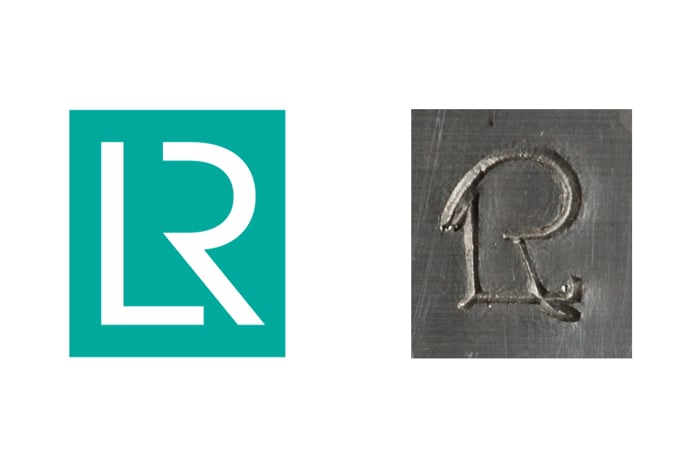
The LR Foundation logo, similar to LR’s, is further underpinned by the word “Foundation” within the plinth. Its vibrant Foundation Fuchsia colour highlights the charitable status for the organisation.
Our identity reflects not only our heritage but also our commitment to independence, technical excellence and public benefit as a maritime trusted adviser. We strive to help our clients respond to the regulatory, economic and societal pressures to be more sustainable and to transform digitally.
As the LR Foundation has said, “To keep up with the pace of change, make the most of technological advances and marshal the resources required for modern-day research and development, collaboration across all parties in the maritime industry has become essential.”
Innovation and collaboration are fundamental to LR as it supports its clients and the maritime sector, working together for a safe, sustainable, and thriving ocean economy. Our identity is one of our many ways to express this promise.






